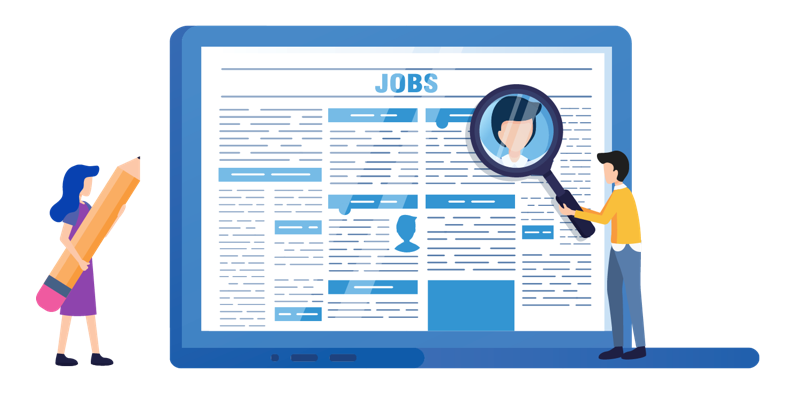Pre Employment Testing
Hiring Success GlossaryTable of Contents
- What is pre-employment testing?
- What are the different types of pre-employment tests?
- Are pre-employment tests legal?
- How do I pass a pre-employment test?
- Do pre-employment tests work?
What is pre-employment testing?
Employers use pre-employment tests to screen job applicants in order to help identify the candidates most likely to succeed in the available position.
What are the different types of pre-employment tests?
The most common types of pre-employment tests include:
Cognitive Ability tests measure intelligence in many different forms. The most common cognitive ability test is the IQ test. Other cognitive ability tests assess specific content areas like math, science, etc.
Physical Ability tests measure a candidates flexibility, strength and/or endurance. Physical ability tests help measure whether or not a candidate can safely meet the demands of an open position that requires physicality.
Personality tests measure a candidate’s attitude, motivations, interpersonal and emotional intelligence. Because they are generally affordable, personality tests are one of the most common pre-employment screening used by employers.
Skills Assessments focus specifically on specialized skills required to perform a given job. Often, skills assessments are conducted by requiring candidates to submit work samples, or perform a sample task indicative of the open role as part of the application process.
Job Knowledge assessments are similar to skills assessments. However, whereas skills assessments require candidates to perform a given task in order to evaluate relevant competencies, job knowledge exams test a candidates knowledge-expertise in relevant areas.
Are pre-employment tests legal?
Pre-employment tests are legal, as long as:
- They are not used to discriminate on the basis of race, sex, religion, disability, age, etc.
- The tests directly apply to the skills and abilities needed to perform the job at hand. For example, while a physical ability test might be appropriate for a job requiring manual labor, it may not be appropriate for sedentary jobs.
Moreover, lie detector tests are typically not legal.
How do I pass a pre-employment test?
Here are some tips to help make sure you perform well on your pre-employment test.
Ask questions ahead of the test: Before your test, ask your hiring manager about the test. They may not provide you with the test beforehand, but they certainly should be willing to tell you what sorts of information you will be tested on, and if there is anything you can do to prepare.
Review relevant skills: for example, if you’re taking a math test, review the relevant material included in the test (algebra, geometry, calculus, etc.). Conversely, if you’re taking a writing exam, it may be useful to brush up on some basic style and grammar rules.
Take practice tests: once you have an idea of the sort of test you’ll take, find similar sample tests online. This will help familiarize yourself with the sorts of questions you’ll be asked, and help you flag any types of questions you tend to answer incorrectly.
Keep the job in mind: as you choose answers for each question, keep the job in mind. What sorts of qualities does the job require? What answers model those qualities?
Be consistent: pre-employment tests typically ask similar questions in multiple forms. Therefore, answer questions consistently. Changing the way you answer similar questions could very well be a red flag for employers.
Furthermore, here are some tips for the actual test:
- Create a comfortable test-taking environment, especially if you’re taking the test at home.
- Stay calm
- Read the whole question carefully
Do pre-employment tests work?
Employers can undoubtedly derive important information about job candidates through pre-employment testing, there are also limitations to these tests.
The most important of these is validity. While pre-employment tests measure specific criterion, those criterion are not necessarily effective predictors of future job success.
Reliability is another potential risk with pre-employment tests. For a test to be reliable, an examinee would have to perform similarly on the exam several times. However, no organization requires a candidate to take the same exam multiple times. Therefore, it's possible that the score a candidate earns on a test--good, bad, or otherwise--is an aberration.
Lastly, it’s imperative that any pre-employment test complies with Equal Employment Opportunity guidelines. With all of this said, it’s imperative that no organization use pre-employment testing as a sole, or even primary, method of hiring.




